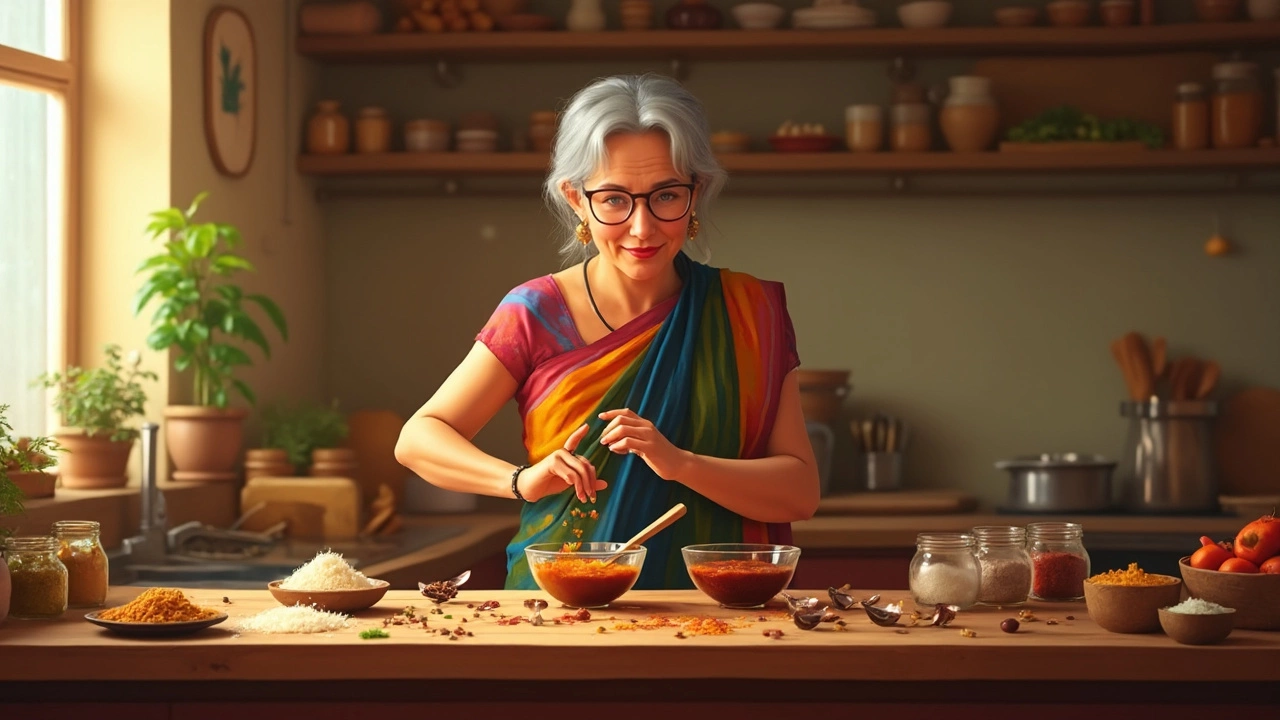How to Thicken Chutney: Simple Fixes for the Perfect Consistency
When you make chutney, a thick, flavorful condiment from South Indian kitchens, often made with coconut, tamarind, chili, or mint. Also known as chutney paste, it's meant to cling to dosas, idlis, and snacks—not pool at the bottom of the bowl. If your chutney turns out too watery, it’s not a failed recipe. It’s usually a matter of timing, technique, or ingredient balance. The good news? Fixing it takes less than five minutes and doesn’t require special equipment.
Coconut, a core ingredient in most South Indian chutneys, adds richness but also moisture. Tamarind, the souring agent that gives chutney its tang, releases water when soaked. And fresh herbs, like cilantro or mint, hold onto a lot of surface water. These are all normal, but they’re why your chutney ends up thin. The fix isn’t about adding flour or cornstarch—it’s about controlling moisture from the start.
Start by toasting dried ingredients like red chilies or urad dal before grinding. This drives off excess moisture and deepens flavor. After blending, if it’s still too runny, cook it for 2–3 minutes in a dry pan over low heat. Stir constantly. The heat evaporates water without burning the chutney. Another trick? Add a teaspoon of roasted gram flour (besan). It thickens naturally and adds a nutty depth. Skip sugar or vinegar if you’re trying to thicken—they make it wetter. And never add water unless the recipe calls for it. Most people do, thinking it helps blend, but it’s the #1 reason chutney turns soupy.
Chutney thickness also depends on how you store it. If you refrigerate it right after blending, condensation forms on the lid and drips back in. Let it cool at room temperature first, then cover and chill. A thin chutney in the fridge will never thicken on its own. But if you’ve used the right technique, it’ll get thicker as it sits—even without heat.
You’ll find dozens of chutney recipes in the posts below—from classic coconut chutney to spicy tomato and tangy mint. Some use roasted peanuts, others rely on sesame seeds. Each has its own trick for thickness. You’ll also see how chutney pairs with dosa, idli, and even sandwiches. No matter which one you make, the same rules apply: control moisture, use heat wisely, and don’t over-blend. The perfect chutney isn’t about fancy ingredients. It’s about knowing when to stop blending—and when to let the pan do the work.
Thickening Agent for Chutney: What Works Best and Why It Matters
Ever struggled with runny chutney that just won’t set? This article breaks down the thickening agents that actually work for chutney, explaining how each one changes the texture and flavor. Expect tips on natural thickeners, troubleshooting watery chutney, and choosing options that match your ingredients. If home canning or presenting vibrant chutneys matters to you, these tricks will save your next batch. Plus, a few surprising facts you probably didn’t know about chutney consistency.
learn more